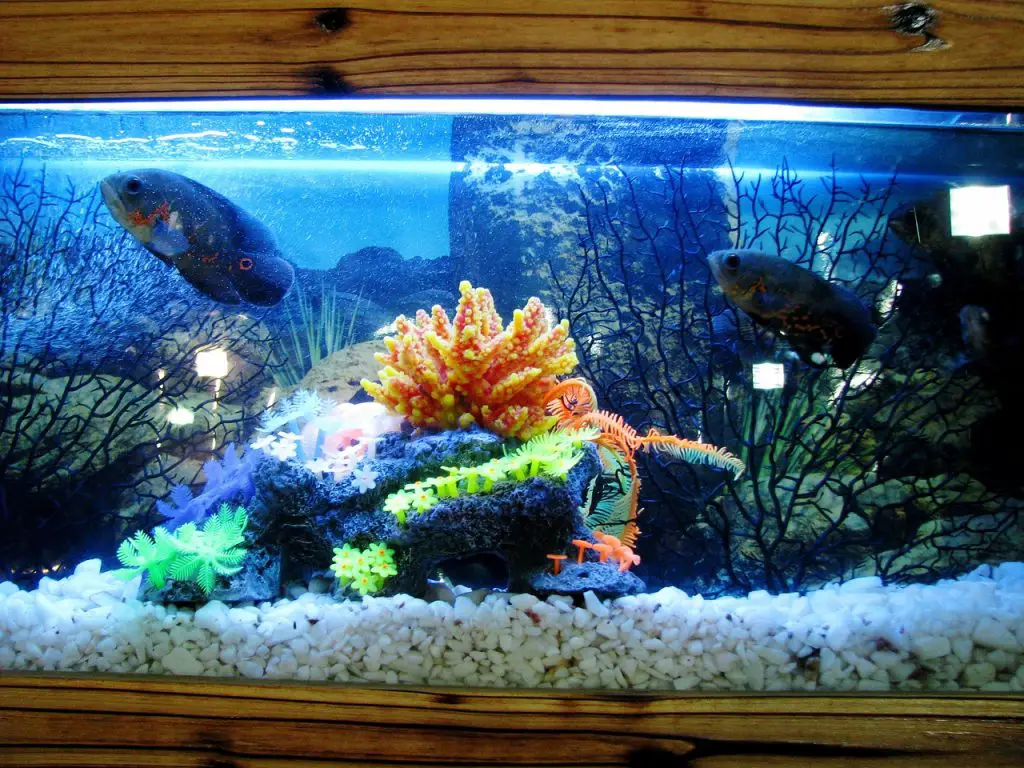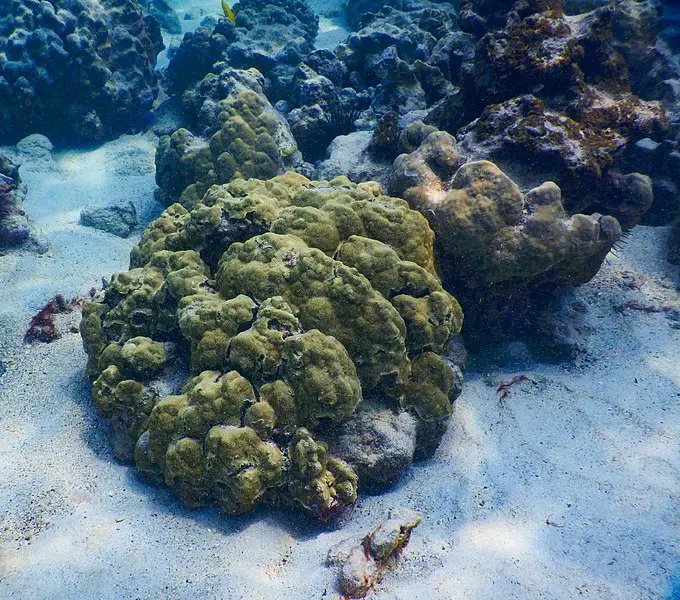Taking care of fish in a tank can be a rewarding and enjoyable hobby, but it’s important to be aware of the common diseases that can affect them. From parasitic infections to bacterial diseases, these illnesses can cause various symptoms and harm your fish’s health.
In this guide, we’ll explore 20 common diseases in fish tanks, explaining what they are, how they form, their effects on your fish, and, most importantly, how to treat them.
By understanding these diseases and their treatments, you can provide the best care for your finned friends and keep them healthy and happy.
1. Ichthyophthirius Multifiliis (Ich):
– Overview: A parasitic infection causing small white spots on the skin, fins, and gills.
– Effects: Fish may exhibit scratching, rubbing against objects, and respiratory distress.
– Formation: Stress, poor water quality, or introducing infected fish can trigger it.
– Treatment: Medications like malachite green or copper-based treatments are effective.
2. Fin Rot:
– Overview: Bacterial disease causing ragged and torn fins.
– Effects: Fins become frayed, and fish may show signs of lethargy and loss of appetite.
– Formation: Poor water quality, physical damage, or bacterial infection can lead to fin rot.
– Treatment: Improve water conditions, remove the affected tissue, and use antibiotics if necessary.
3. Velvet Disease:
– Overview: Parasitic disease causes a gold or rusty dusting on the fish’s body.
– Effects: Fish may exhibit lethargy, loss of appetite, and rapid breathing.
– Formation: Stress, poor water quality, or introduction of infected fish can cause velvet disease.
– Treatment: Medications like copper sulfate or malachite green are effective against velvet.
4. Dropsy:
– Overview: A condition caused by a kidney bacterial infection, leading to fluid accumulation, and swelling in the fish’s belly.
– Effects: Fish may show bloating, raised scales, and lethargy.
– Formation: Poor water quality, bacterial infection, or internal organ failure can cause dropsy.
– Treatment: Isolate the fish, improve water conditions, and use antibiotics if necessary.
5. Mouth Fungus:
– Overview: A bacterial infection is a cottony growth around the mouth and face.
– Effects: Mouth and face become covered in white or grayish patches, leading to difficulty eating.
– Formation: Poor water quality, physical injury, or bacterial infection can cause mouth fungus.
– Treatment: Improve water conditions, use antibiotics, and provide proper nutrition.
6. Swim Bladder Disease:
– Overview: A condition affecting a fish’s buoyancy, causing it to float on its side or upside down.
– Effects: Fish may struggle to swim properly and have difficulty reaching the surface for air.
– Formation: Overfeeding, poor diet, or bacterial infection can contribute to swim bladder disease.
– Treatment: Adjust feeding habits, improve water quality, and use antibiotics if necessary.
7. Pop-eye:
– Overview: A condition where the fish’s eye protrudes abnormally.
– Effects: Fish may have swollen or bulging eyes, impairing vision.
– Formation: Bacterial infection, physical injury, or poor water quality can cause pop-eye.
– Treatment: Improve water conditions, use antibiotics, and provide proper nutrition.
8. Hole-in-the-Head Disease:
– Overview: Primarily affects cichlids and discus fish, causing pits or holes in the head and lateral line.
– Effects: Fish may exhibit loss of appetite, weight loss, and visible lesions.
– Formation: Poor water quality, nutritional deficiencies, or bacterial infection can lead to hole-in-the-head disease.
– Treatment: Improve water conditions, provide proper nutrition, and use antibiotics if necessary.
9. Gill Flukes:
– Overview: Parasites that attach to the fish’s gills, causing breathing difficulties and loss of color.
– Effects: Fish may gasp for air, show rapid gill movement, and exhibit lethargy.
– Formation: Poor water quality, introduction of infected fish, or contaminated equipment can lead to gill flukes.
– Treatment: Use medications like praziquantel or formalin to eliminate gill flukes.
10. Anchor Worm:
– Overview: A parasite that burrows into the fish’s skin, causing inflammation and secondary infections.
– Effects: Fish may exhibit excessive scratching, redness, and wounds.
– Formation: Introducing infected fish or contaminated water sources can cause anchor worm infestation.
– Treatment: Physically remove the worms, use medications like trichlorfon, and improve water conditions.
11. Columnaris:
– Overview: A bacterial infection appearing as white or grayish patches on the skin.
– Effects: Fish may show frayed fins, ulcers, and lethargy.
– Formation: Poor water quality, overcrowding, or physical injury can contribute to columnaris.
– Treatment: Improve water conditions, use antibiotics, and maintain proper hygiene.
12. Lymphocystis:
– Overview: A viral disease-causing growths on the skin, fins, and occasionally the gills.
– Effects: Fish may have wart-like growths, exhibit behavioral changes, and show signs of stress.
– Formation: Stress, poor water quality, or introduction of infected fish can lead to lymphocystis.
– Treatment: No specific treatment; focus on maintaining good water quality and reducing stress.
13. Fish Lice (Argulus):
– Overview: External parasites that attach to the fish’s body, causing excessive scratching and redness.
– Effects: Fish may show signs of irritation, lethargy, and loss of appetite.
– Formation: Introduction of infected fish or contaminated water sources can cause fish lice infestation.
– Treatment: Physically remove lice, use medications like formalin or potassium permanganate, and improve water conditions.
14. Hexamita:
– Overview: A parasitic infection affecting the digestive tract, resulting in weight loss and white, stringy feces.
– Effects: Fish may exhibit loss of appetite, lethargy, and pale coloration.
– Formation: Poor water quality, stress, or contaminated food can lead to hexamita infection.
– Treatment: Improve water conditions, use medications like metronidazole, and provide proper nutrition.
15. Fish Tuberculosis:
– Overview: A slow-progressing bacterial disease-causing weight loss, loss of color, and deformities in fish.
– Effects: Fish may exhibit lethargy, loss of appetite, and visible external lesions.
– Formation: Introduction of infected fish, poor water quality, or inadequate nutrition can contribute to fish tuberculosis.
– Treatment: No cure available; focus on maintaining good water quality and providing proper nutrition.
16. Cloudy Eye:
– Overview: A condition that clouds over the fish’s eye.
– Effects: Fish may have hazy or opaque eyes, leading to impaired vision.
– Formation: Injury, poor water quality, or bacterial infection can cause cloudy eyes.
– Treatment: Improve water conditions, use antibiotics, and provide proper nutrition.
17. Ammonia Poisoning:
– Overview: High ammonia levels in the water lead to red or inflamed gills, lethargy, and loss of appetite.
– Effects: Fish may gasp for air, show rapid gill movement, and exhibit abnormalities in behavior.
– Formation: Overfeeding, inadequate filtration, or overcrowding can result in ammonia poisoning.
– Treatment: Improve water conditions, perform regular water changes, and monitor ammonia levels.
18. Nitrite Poisoning:
– Overview: High nitrite levels in water cause symptoms like rapid gill movement, gasping for air, and darkening of fish’s color.
– Effects: Fish may show signs of distress, lethargy, and loss of appetite.
– Formation: Poor water quality, inadequate filtration, or overstocking can lead to nitrite poisoning.
– Treatment: Improve water conditions, perform regular water changes, and monitor nitrite levels.
19. Internal Parasites:
– Overview: Various worms and other parasites infect fish, leading to weight loss, abnormal behavior, or visible worms in the feces.
– Effects: Fish may exhibit loss of appetite, lethargy, and abnormal swimming patterns.
– Formation: Introducing infected fish, contaminated food, or poor water quality can cause internal parasites.
– Treatment: Use medications like praziquantel or levamisole to eliminate internal parasites.
20. Neon Tetra Disease:
– Overview: A parasitic organism causing restlessness, color loss, difficulty swimming, and developing a lumpy or cyst-like appearance.
– Effects: Infected fish may show signs of stress, appetite loss, and abnormal swimming behavior.
– Formation: Introduction of infected fish or contaminated water sources can lead to neon tetra disease.
– Treatment: No cure available; focus on maintaining good water quality, quarantine infected fish, and provide proper nutrition.
Conclusion:
By understanding the common diseases that can affect fish in tanks, you can proactively prevent and treat these illnesses. Maintaining good water quality, providing proper nutrition, and promptly addressing any signs of disease are essential for the well-being of your fish. Regular observation, quarantine procedures, and appropriate medication can help keep your finned friends healthy and thriving.
FAQs:
Q1: How can I prevent diseases in my fish tank?
A: To prevent diseases, maintain good water quality by regularly testing and monitoring parameters like temperature, pH, ammonia, nitrite, and nitrate levels. Provide a well-balanced diet and avoid overfeeding. Quarantine new fish before introducing them to the main tank to prevent the spread of diseases. Keep the tank clean by performing regular water changes and maintaining proper filtration.
Q2: Can I use natural remedies to treat fish diseases?
A: While some natural remedies may have anecdotal evidence of effectiveness, it is generally recommended to use medications specifically designed to treat fish diseases. Natural remedies may not provide the targeted treatment and could harm your fish or the balance of your tank.
Q3: How do I know if my fish is sick?
A: Look out for signs such as changes in behavior, loss of appetite, abnormal swimming patterns, visible lesions, frayed fins, or discoloration. Rapid breathing, scratching against objects, or gasping for air can also indicate illness. Regularly observing your fish’s appearance and behavior will help you identify potential health issues.
Q4: Can I treat fish diseases without medication?
A: In some cases, improving water quality, providing a balanced diet, and maintaining proper tank conditions can help fish recover from mild illnesses. However, for severe or contagious diseases, it is often necessary to use appropriate medications to treat the fish and prevent the spread of infection effectively.
Q5: How long does it take for fish to recover from a disease?
A: The recovery time can vary depending on the disease, the infection’s severity, and the fish’s overall health. Some diseases may be treated successfully within a few days, while others may require weeks of treatment and care. It is essential to follow the recommended treatment guidelines and monitor your fish closely for signs of improvement.
Q6: Can I reintroduce fish to the main tank after they recover from the disease?
A: It is crucial to ensure that the fish have fully recovered and are no longer carrying any contagious pathogens before reintroducing them to the main tank. Quarantine the fish for an appropriate period, monitor their health, and consult with a veterinarian or experienced fish keeper to determine if it is safe to reintroduce them.
Q7: Should I remove sick fish from the main tank?
A: If you notice a fish displaying signs of illness, isolating the affected fish in a separate quarantine tank is generally recommended. This helps prevent the spread of disease to other fish and allows for focused treatment and observation.


